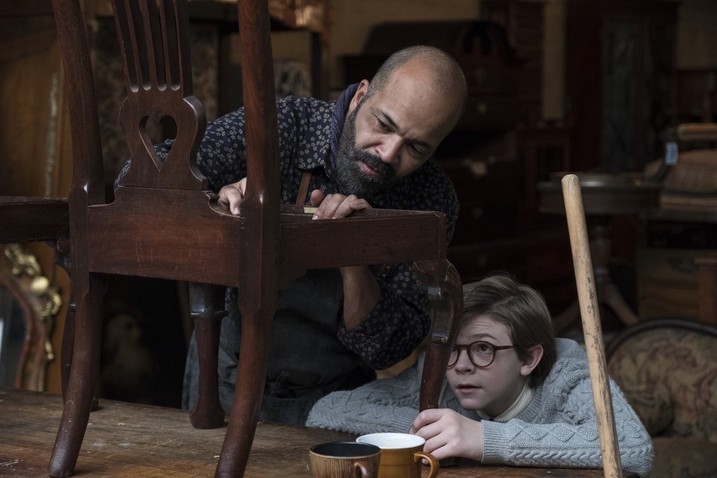The Goldfinch Can’t Quite Soar (Movie Review)
 I’ve only read fifty-one pages of Donna Tartt’s Pulitzer Prize-winning novel The Goldfinch, yet I can tell from such a small sample (the book is nearly 800 pages) that a 140-minute feature adaptation would be a tricky endeavor. Nevertheless, John Crowley, who directed 2015’s Brooklyn, one of the best films of the decade, has given it a go. The results are the mixed bag I expected, though certainly not the dumpster fire the pre-release buzz from recent films festivals seemed to suggest.
I’ve only read fifty-one pages of Donna Tartt’s Pulitzer Prize-winning novel The Goldfinch, yet I can tell from such a small sample (the book is nearly 800 pages) that a 140-minute feature adaptation would be a tricky endeavor. Nevertheless, John Crowley, who directed 2015’s Brooklyn, one of the best films of the decade, has given it a go. The results are the mixed bag I expected, though certainly not the dumpster fire the pre-release buzz from recent films festivals seemed to suggest.
—
Set primarily in two time periods, the story begins in the early 2000s, as 13-year-old Manhattanite Theo (Oakes Fegley) survives a bombing at the Metropolitan Museum of Art. He loses his mother in the blast but gains a priceless work of art; Carel Fabitius’ 1654 masterpiece, The Goldfinch, a tiny painting (only 13 by 9 inches) featuring an even smaller bird shackled by a gold chain. Not to sound indelicate but who hasn’t thought of walking out of the Met with a priceless work of art?
Theo ends up in the temporary care of a wealthy classmate’s family whose mother (Nicole Kidman) dresses like a member of Jackie O’s squad. Later, Theo will be exiled from privilege, moving to Nevada to live with his deadbeat dad (Luke Wilson) and his not so nice girlfriend (Sarah Paulson). Thirteen years later, twentysomething Theo (Ansel Elgort) still suffers from the loss of his mother, sinking deeper into depression, aided by whatever drugs he gets his hands on. All the while – in both time periods – he cherishes a painting the world assumes has been lost forever.
At times, primarily when focused on the big ideas of the plot, this film with clear aspirations for awards consideration, can feel like homework. Yet I’d be remiss not highlight the film’s stronger aspects beyond the stunning visuals by Oscar-winning cinematographer Roger Deakins (Blade Runner 2049). Namely, the smaller moments with Jeffrey Wright as an antique restoration dealer/father figure and the endless Nevada nights with a boy played by Finn Wolfhard (It Chapter Two).
The latter sports a goofy Ukrainian accent as the unsubtly named Boris yet the young actor has charm to spare. Wright’s character offers sage wisdom on living an authentic life by showing Theo the differences between genuinely vintage woodwork and those made by machines. Cheesy? Could be but Wright absolutely sells these monologues.
These moments reminded me of the smaller details I find myself enjoying most in the novel, little as I’ve read so far. This not a story focused on plot. It’s informed by the way any of us takes in the world, how all of it is informed by our own circumstances, and the people we meet along the way.
The Goldfinch wants to show us how memories take residence in our minds and rarely let go. It’s no wonder the book won the Pulitzer. These kinds of themes played out across iconic landscapes, a failed suburban enclave, a lived-in New York cityscape, and a somewhat black-watered swimming pool scream “The American Dream.”
Yet, for all its lack of subtlety, I was all in. Utterly enthralled with the first two thirds, I liked hanging out with Theo (called ‘Potter’ as in Harry by Boris). I had to look past the overly dramatic scenes with Wilson and Paulson as the cruel life contrasting the high society cocoon Theo lost at a young age. Regardless of the optics in 2019 (poor equals bad, and rich equals good), the film casts a spell.
Alas, such a spell is pretty much broken in what feels like 200 pages suddenly crammed into the last 20 minutes. Plot holes, contrived developments, and the dreaded “this is what it’s all about” speech rear their ungainly head before the credits roll. And yet… I still want to finish the novel. At the very least that means some of these characters left a mark.
























Peter
Beautifully written and empathetic review.
I have read the book and look forward to the movie condensed version.
That being said ….. you have peaked my curiosity to watch the movie.
Thank you